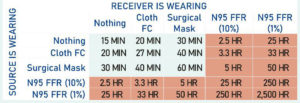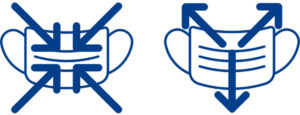- About
-
-

- About
-
ACGIH is a 501(c)(3) charitable scientific organization that advances occupational and environmental health.
-
-
- Subscriptions
-
- Science
-
-

- Science
-
This section has been established to help educate industry, government, and the public on what TLVs and BEIs are, and how TLVs and BEIs may best be used.
-
-
- Career Development
-
-

- Career Development
-
ACGIH is committed to providing its members and other occupational and environmental health professionals with the training and education they need to excel in their profession.
-
-
- Publications
-
-

- Publications
-
ACGIH has publications in many different areas that fit your needs in your field.
-
- Publications Store
- ACGIH Signature Publications
ACGIH Digital Library
If you need to purchase the Digital Library, click here.
If you have purchased and need to access the Digital Library, click here.
-
-
Anyone can be a source. Anyone can be a receiver.

With an N95 filtering facepiece respirator (FFR)…
…he has 1-10% inward leakage and outward leakage.
Workers need a fit-tested* respirator to prevent inhalation of infectious particles. Better respirators with higher protection factors should be used for high particle concentrations.

With a surgical mask…
…he has 50% inward leakage and outward leakage
A surgical mask may be appropriate for patients to wear as source control. It does not provide adequate protection for workers from inhalable infectious particles.

With a cloth face covering (Cloth FC)…
…he has 75% inward leakage and outward leakage.
A cloth face covering may be appropriate for the public to wear as source control, but they should limit proximity to others and time spent in an indoor space.
*N95 FFRs have an assigned protection factor of 10 (10% inward leakage) but must receive a fit factor of 100 (1% inward leakage) on an individual worker.
A FACE COVERING GIVES MINUTES. A RESPIRATOR GIVES HOURS.
According to CDC, an uninfected person with no face covering can be infected if within 6 feet of an infected person for 15 minutes. The time increases to 27 minutes if both are wearing a cloth FC, and to 2,500 hours if both are wearing a fit-tested N95 FFR. The table below indicates time to infection for other combinations.
Time to Infectious Dose for Someone Not Infected with COVID-19

INWARD LEAKAGE = Percentage of particles entering the facepiece to be inhaled by a receiver
OUTWARD LEAKAGE = Percentage of particles exhaled by a source exiting the facepiece

WARNING: If respirators are required for other workplace hazards, do not stop their use. Treat COVID-19 as a new hazard that may require additional protection.





